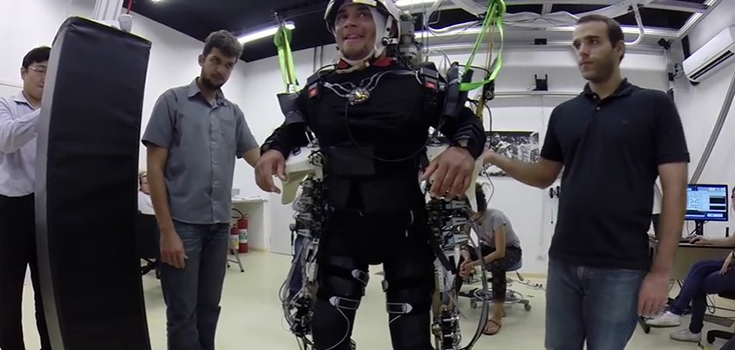Machines Help People with Spinal Injuries Regain Mobility
Machines Help People with Spinal Injuries Regain Mobility
Researchers in Brazil are hard at work on the Walk Again Project, which retrains the brain of someone who have suffered a spinal injury to help them regain mobility.
Researchers in Brazil are hard at work on the Walk Again Project, which retrains the brain of someone who have suffered a spinal injury to help them regain mobility. This is done through “retraining,” accomplished by interacting with a robot.
Recent research found that those who had lost mobility were able to regain some of it and some of their lost sensation, however, none of the participants were able to fully support themselves on their legs after the study.Dr. Miguel Nicolelis, a neuroscientist and physician with Duke University, says that although no one made a dramatic miraculous recovery, many were able to regain some sensation which greatly impacted their quality of life. Some people were able to regain function of their bowels and bladder and some of the male subjects were able to have and sustain an erection again. One female participant delivered her baby vaginally as she could feel the contractions. [1]
The participants “retrained” their brains by having them visualize moving. They wore virtual reality goggles and were strapped into a machine that gave them tactile feedback on their arms and legs. Nicolelis found that when people were able to actually visualize their movements, they were able to regain some function.
Those who participated in the study were 8 paraplegics who had lost control of their arms and legs anywhere from 3 to 13 years prior to the study.
“For the first time in many years they were able to voluntarily control their muscles. They could move their legs or contract muscles under voluntary control.” [2]
Some people even had their level of paralysis downgraded to “incomplete paraplegia.”
Two women who participated in the study were able to flex their knees, which they were previously unable to do before taking part in Nicolelis’ research. One woman was almost able to drive after her participation.
“This has not been seen before. I call this an important milestone,” Nicolelis said proudly of his work.
| About Anna Scanlon: | |
| Anna Scanlon is an author of YA and historical fiction and a PhD student at the University of Leicester where she is finishing her degree in modern history. You can find out more about Anna and her books on her lifestyle blog annainwonderland.co.uk. | |
Other Popular Stories:
There are no related stories quite yet.

Post a Comment